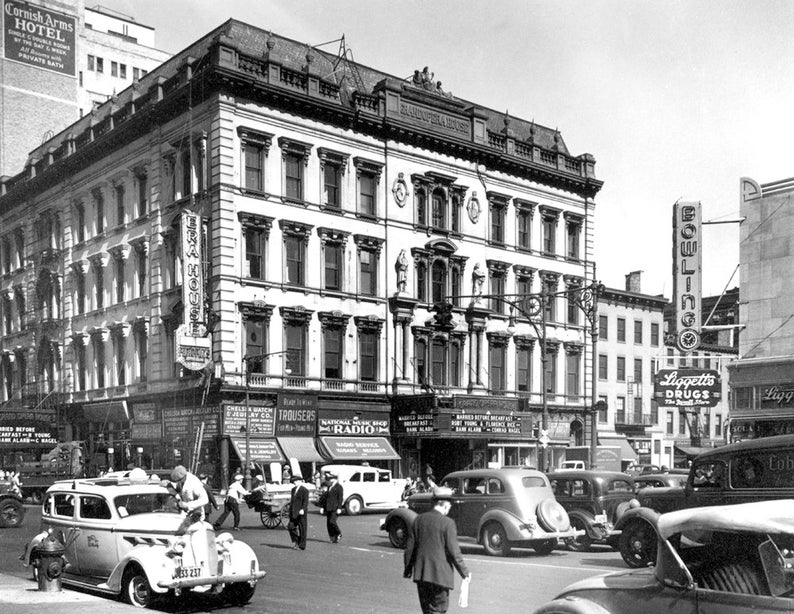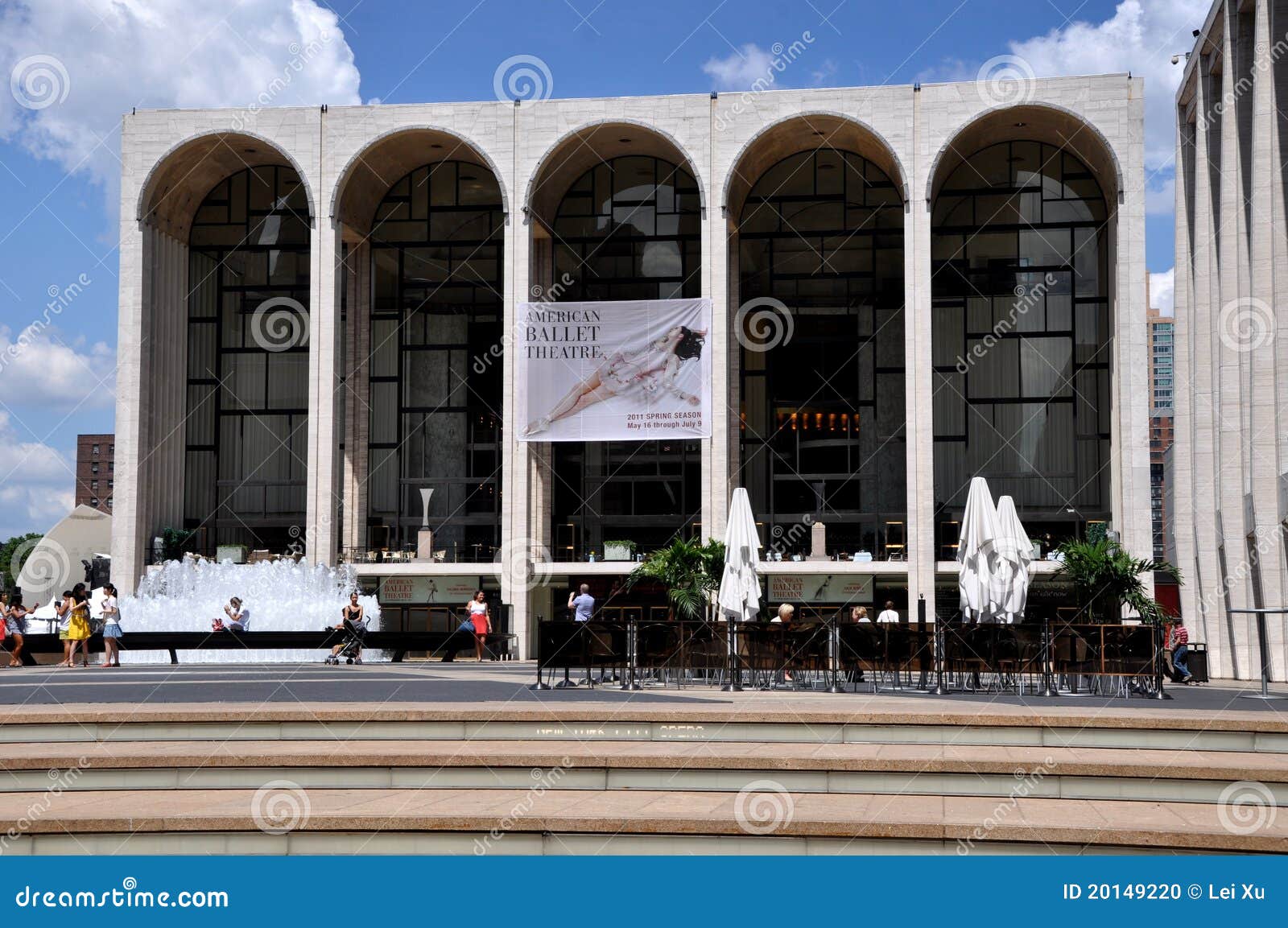
As for applause mid-performance, opera scores are generally more fluid than musical theatre, so read the room before clapping. Applause following an overture, a notable aria, or a particularly impressive vocal performance is common (especially at the Met), and in some rare cases, could even lead to an encore. Speaking of which, get hyped for your night at the opera by giving a key aria or two from the show a listen.
Metropolitan Opera House, Lincoln Center
During the 1983–84 season the Met celebrated its 100th anniversary with an opening night revival of Berlioz's mammoth opera Les Troyens, with soprano Jessye Norman making her Met debut in the roles of both Cassandra and Dido. An eight-hour Centennial Gala concert in two parts followed on October 22, 1983, broadcast on PBS. The gala featured all of the Met's current stars as well as appearances by 26 veteran stars of the Met's the past. Among the artists, Leonard Bernstein and Birgit Nilsson gave their last performances with the company at the concert.[50] This season also marked the debut of bass Samuel Ramey, who debuted as Argante in Handel's Rinaldo in January 1984.
The Met Opera's New Season: What We Want to See - The New York Times
The Met Opera's New Season: What We Want to See.
Posted: Wed, 21 Feb 2024 08:00:00 GMT [source]
pollo Theater
The only thing more cringe-worthy than a severely misguided production is someone thinking a “boo” is a legitimate critique. Unlike a majority of Broadway houses, there’s far more to do than browse through your Playbill and wait in line for the restroom between acts. Just a few subway stops from the marquees of Broadway, the Metropolitan Opera continues its 2023–24 season, featuring seven new productions and seventeen revivals.
New York City Opera

Kathleen Battle, who in 1977 made her Met debut as the Shepherd in Wagner's Tannhäuser, became an important star in lyric soprano roles. Bass-baritone Simon Estes began a prominent Met career with his 1982 debut as Hermann, also in Tannhäuser. The operas in the Met's repertoire consist of a wide range of works, from 18th-century Baroque and 19th-century Bel canto to the Minimalism of the late 20th and 21st centuries.[5] These operas are presented in staged productions that range in style from those with elaborate traditional decors to others that feature modern conceptual designs.
Review: 'X: The Life and Times of Malcolm X' at the Met - The New York Times
Review: 'X: The Life and Times of Malcolm X' at the Met.
Posted: Sun, 05 Nov 2023 07:00:00 GMT [source]
Featured Videos
You may be surprised by how much you already know, and it’ll make the unparalleled experience of hearing that unamplified sound live all the more special. Seats closer to the stage—and ground—will cost more, but just like on Broadway, affordable options exist, including a day-of online rush and student performances. Attending the opera for the first time can be intimidating, but with the right attitude, it's as accessible as a night at the theatre—and a far cry from the sacrosanct experience it's often portrayed to be.
arquis Theatre
The season kicked off September 26 with the house premiere of Terrence McNally and Jake Heggie's Dead Man Walking directed by Ivo van Hove, and continues through June 8, 2024. MetTitles are available in English, Spanish, and German for all opera performances, and in Italian for all Italian-language operas. Every spot in the opera house is outfitted with a small seat-back screen featuring subtitles in multiple languages, making it simple to follow along with the onstage action, regardless of whether the performers are singing in Italian, French, German, Russian, or Czech.
The Metropolitan Opera
The original trio of legendary divas—Renée Fleming, Kelli O’Hara and Joyce DiDonato—reprise their celebrated portrayals of three women from different eras whose lives intersect through the power of Viriginia Woolf’s Mrs. Dalloway. Armchair historians might be able to find out easily which of the opera houses prevailed, but the fun of the opera wars as depicted on The Gilded Age isn’t so much the outcome of the rivalry as the wild antics that lead up to it. That interest has found an excellent outlet in the second season of the Fellowes-created series The Gilded Age, airing now on HBO.
Serving from 1950 to 1972, Bing became one of the Met's most influential and reformist leaders. ] ticket sales system, and brought an end to the company's Tuesday night performances in Philadelphia.[40] He presided over an era of fine singing and glittering new productions, while guiding the company's move to a new home in Lincoln Center. While many outstanding singers debuted at the Met under Bing's guiding hand, music critics complained of a lack of great conducting during his regime,[citation needed] even though such eminent conductors as Fritz Stiedry, Dimitri Mitropoulos, Erich Leinsdorf, Fritz Reiner, and Karl Böhm appeared frequently in the 1950s and '60s.
However, a number of the Met's conductors have assumed a strong leadership role at different times in the company's history. They set artistic standards and influenced the quality and performance style of the orchestra, but without any official title. During its 70-year-plus history, the NYCO has helped launch the careers of many great opera singers including Beverly Sills, Sherrill Milnes, Plácido Domingo, Maralin Niska, Carol Vaness, José Carreras, Shirley Verrett, Tatiana Troyanos, Jerry Hadley, Catherine Malfitano, Samuel Ramey, and Gianna Rolandi. Sills later served as the company's director from 1979 until 1989.[11] More recent acclaimed American singers who have called NYCO home include David Daniels, Mark Delavan, Mary Dunleavy, Lauren Flanigan, Elizabeth Futral, Bejun Mehta, Robert Brubaker and Carl Tanner. NYCO has similarly championed the work of American composers; approximately one-third of its repertoire has traditionally been American opera.
Beyond these experiments, however, and an occasional gala or special, the Met did not become a regular presence on television until 1977. Sponsorship of the Met broadcasts during the Depression years of the 1930s was sporadic. Early sponsors included the American Tobacco Company, and the Lambert Pharmaceutical Company, but frequently the broadcasts were presented by NBC itself with no commercial sponsor.[94] Sponsorship of the Saturday afternoon broadcasts by The Texas Company (Texaco) began on December 7, 1940, with Mozart's Le nozze di Figaro. Texaco's support continued for 63 years, the longest continuous sponsorship in broadcast history and included the first PBS television broadcasts. After its merger with Chevron, however, the combined company ChevronTexaco ended its sponsorship of the Met's radio network in April 2004.
Most operas have at least one intermission—use that time to grab a glass of champagne or a quick bite (view food and drink options) and explore the opera house. Visit the Grand Tier level to see Marc Chagall’s famous murals hanging on either side of the house, then take in the view of Lincoln Center Plaza from the balcony. And the Met Opera Shop, located in the north lobby, has recordings and gifts to help you commemorate your visit. Gelb began outlining his plans in April 2006; these included more new productions each year, ideas for shaving staging costs, and attracting new audiences without deterring existing opera-lovers. Gelb saw these issues as crucial for an organization which is dependent on private financing.
While many singers appear periodically as guests with the company, others maintain a close long-standing association with the Met, appearing many times each season until they retire. The Metropolitan Opera House, also known as the “Old Met,” was a large opera house on Broadway in New York City. In the years following the Civil War, the “new moneyed” aristocracy began to feel that the old, 1850s-era Academy of Music no longer met the necessities of New York high society. The Metropolitan Opera House, built in the early 1880s, addressed these concerns. It was much larger—its five-balcony auditorium could house 3389 people—and its design spoke to postbellum American attempts to bypass the standards of European artists. As a result, the opera house was visually representative of the needs of a rising upper class.Structurally, the five balconies and main floor, with box seating and space for 380 standees, was imposing.

No comments:
Post a Comment